I’ve already written previously about the fare changes happening (some announced in December, others announced in March), but it’s probably worth considering them all together.
Exact 2-hour fares — from 10/8/2014
From yesterday, 2-hour fares are exactly two hours.
Although it was originally flagged in December, this has crept up, quietly announced on Friday by PTV, with only two days notice — quite different from the “good” changes that the government is promoting heavily, many months in advance.
(They still last until 3am if started after 6pm; and long V/Line trips still get extra time if travelling across more than 5 zones. The Daily cap still applies, eg a maximum of two 2-hour fares. And the touch-off can be after the expiry time without incurring another fare.)
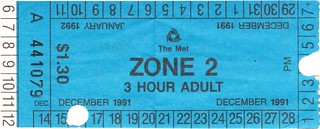 This was arguably a hangover from paper tickets, which had a limited number of notches to mark the hour of expiry. But the rule had been carried over to Metcard and to Myki.
This was arguably a hangover from paper tickets, which had a limited number of notches to mark the hour of expiry. But the rule had been carried over to Metcard and to Myki.
On one level it’s logical to use a fixed time period rather than starting from the next hour.
But some people used it to get a cheap round trip, for instance a quick journey to the shops or the doctor. It seems unlikely this change will pull in a lot more revenue, but for those watching their pennies, it may make a big impact.
It remains to be seen if people will mill about station entrances waiting until the train is coming to touch-on. I never saw a huge number of people waiting for the hour to tick over, though some certainly did.
And it may cause problems on long trips, as if you’re travelling for two hours, then go to touch-off, the system will treat it as another touch-on (with a default two-zone fare). At a station you can touch-off again using the Change Of Mind feature, but on a bus, such as Melbourne’s loooong orbital Smartbus routes, there’s no such option.
I actually think it would have been a better move to make it a fixed three hour period. (At one stage, all tickets were 3 hours.) Minimal impact on revenue, but fairer for those on limited budgets wanting to make short local trips, especially in the outer suburbs where services are often infrequent.
And of course, Myki equipment should show the expiry time of the fare. At the moment, it’s not shown anywhere for Myki Money — and it’s not like many people will be able to remember they touched-on at precisely 11:06am.
Weekend daily cap rise — from 1/1/2014
We shouldn’t forget this one: Last year the maximum daily fare in Melbourne on weekends and public holidays was $3.50. This year it’s $6. Combined with the above change, some weekend travel has jumped around 70% in price.
It’s unclear if this has had an impact on weekend travel.
Free tram rides in the CBD — from 1/1/2015
From this coming January, all trams in the CBD will become free.
Obviously the impact is likely to be that CBD trams — already often crowded — will become even more crowded.
I’ll leave it to then-Premier Joan Kirner to explain who benefits from this one, in this Age article from just before the 1992 state election:
In 1992 the Kennett government was voted in, and arguably (thankfully) back-pedalled a little, introducing the free City Circle tram, rather than making all CBD trams free.
I’m with Joan on this. The major beneficiaries are motorists — the very last people who should be benefiting — though tourists and CBD residents will also gain.
But most public transport users don’t benefit at all, because their fare to and from work already includes all day travel in the CBD. As I’ve already noted, Alanis Morissette might have said of this: It’s a free ride when you’ve already paid.
Indeed, last week I was surveyed by PTV about the change. I honestly said that if this makes trams more crowded, I’ll be using them less. In that case, the freeloaders will win at the expense of paying public transport users.
Thankfully the CBD congestion levy area (that’s a tax on inner-city carparks, which anecdotally is working in discouraging motorists into the CBD, and may even be convincing car park owners to redevelop their properties into something more profitable) is bigger than the free tram area, so we hopefully won’t see people driving to the city-fringe where they can jump on a free tram to work, though you don’t know what a price signal like this might do.
Zone 1 to cover all of Melbourne — from 1/1/2015
Also from January the most you’ll pay within the current zone 1 and 2 area is a zone 1 fare. This includes all of metropolitan Melbourne, and regional areas as far away as Lara, Wallan and Bacchus Marsh.
One wonders how this will affect crowding, particularly on trains (both Metro and V/Line), but also on Doncaster area buses, which have a lot of two-zone trips.
Obviously this benefits outer-suburban passengers who travel into zone 1 regularly — provided of course they have a decent service they can access. For many, railway stations may remain too far to walk, nearby parking scarce, and connecting buses poor (as noted in an Auditor General report released last week).
Those who currently just travel across a zone boundary will obviously be happy. The current huge jump is pretty hard to bear if you’re only going an extra stop or two.
In a way this puts all of Melbourne on an equal footing in terms of fare cost, though it also means a huge disparity in the cost per kilometre.
The government estimated that this change and free CBD tram rides will cost about $100 million per year. (To be precise, the budget put it at $390 million over 4 years.)
Long term, the real danger is upward pressure on the standard zone 1 fare, as seen in Adelaide with their single fare zone, and in Melbourne after zone 3 was merged with zone 2.
Fares up by CPI plus 2.5% — 1/1/2015 and 1/1/2016
While they’re cutting the two-zone fare, the government did announce in December that there would be CPI+2.5% rises two years in a row, in 2015 and 2016. So it seems while the cost of two-zone trips drop, single zone trips will start to creep up.
Still unconfirmed
Still unconfirmed but strongly rumoured: Removal of the Earlybird fare. Once again, it’s unclear how much revenue this would pull in, remembering that the original impetus was to save money that would otherwise need to be spent providing extra train capacity in morning peak.
And while Labor has said they’d go ahead with the two-zone price cut and free CBD trams, they haven’t said anything about rolling back the 2-hour change, nor about the CPI+2.5% rises.
Conclusion
It’s a real mixed bag of reforms that the government has announced — giving with one hand, taking away with the other.
Revenue is going to be up and down, all over the place. It’s really hard to see this as anything more than a grab bag of politically-motivated changes, rather than a well-planned, thoughtful strategy to make fares fairer.
They’re obviously courting outer-suburban voters with the zone changes.
They may not care much (or haven’t thought about) about the impact on people with limited incomes trying to squeeze the most they can out of a 2-hour fare.
Free CBD tram rides… well, I’m not sure it’ll convince many residents in the state seat of Melbourne to vote for them (it’s really a Labor/Greens contest), but those who drive their cars into the city and like free rides at lunchtime will certainly be happy… if they can squeeze onto a tram.
The huge numbers of people living and travelling in zone 1 won’t get the benefit of a price cut, and will see fares jump by CPI+5% over two years — so expect to see the base fare creep towards $4, and be under even more pressure to rise to make up for foregone revenue.
It’s a bit like GST. Nobody likes paying it, but if they were to reduce its scope, and make it a flat amount for some higher value transactions, it’s obvious the rate would eventually go up to cover it.
I’ll leave you with the full Age article quoting Joan Kirner… it touches on a number of interesting topics going into the 1992 election, including promises to extend the rail network (Craigieburn was eventually done in 2007, South Morang 2012, Sunbury 2012, Baxter still isn’t done), the prospect of cuts to station staff and conductors under Kennett (which happened, and resulted in the Metcard ticket system), and extra bus services (nothing really happened until two Smartbuses were implemented ten years later, then little more until after 2006).
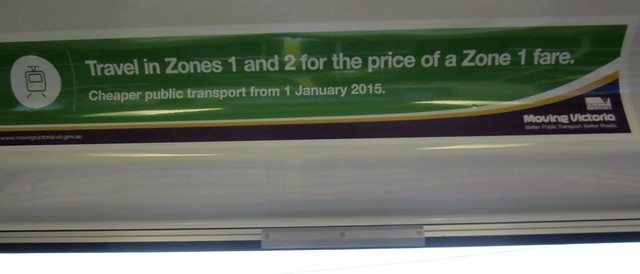
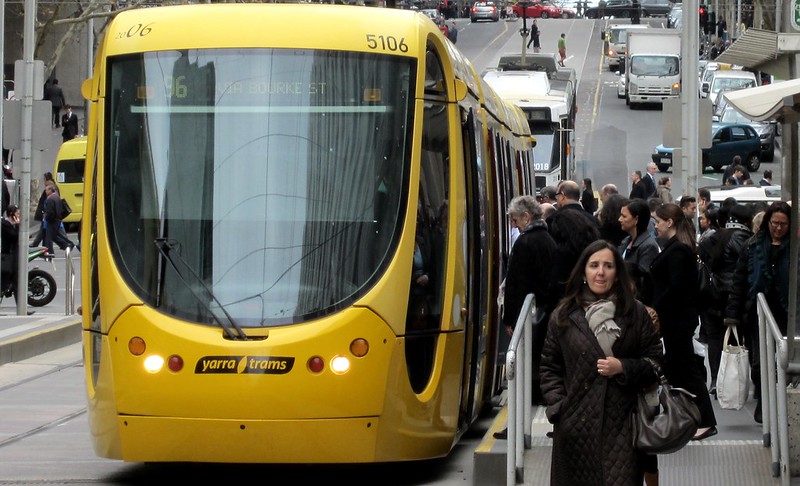
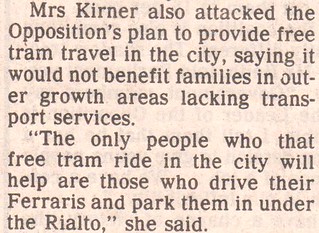
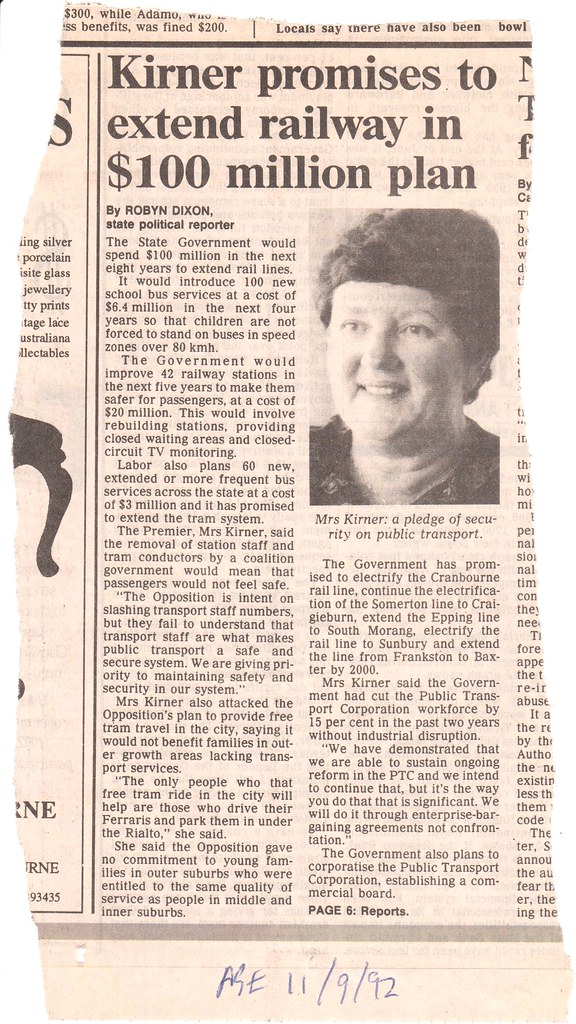
13 replies on “Giving with one hand, taking with the other: 2014-15 #Myki fare reform”
A great summary, as usual. There is some confusion “out there” that zone 2 will be abolished so that trips within zone 2 will be more expensive (charged at zone 1 rates). But I think this may be Labor policy.
BTW, with regard “unconfirmed” elements you report, is it possible for the PTUA to write to PT minister and get a ruling on this? Surely, the authorities can be asked to give a definite “yes” or ‘no’? Or is it not as simple as this?
Roger
I don’t know how many car parks in the city you will convert – parking is the most profitable use of land in Australia!
Very interested in seeing what the Zone 2 “abolishment” will do the car parking at my local station (Huntingdale). I walk up past the 1.5km of cars parked on Huntingdale Road every day.
Aside – was ambushed by Elizabeth Miller on Nepean Highway/South Road on Saturday. She insisted on telling me about the Southland Station – work is progressing (a site survey, as far as I could tell). I made appropriate enthusiastic noises …
RE: The old tickets.
How I remember those times of the 1980s and 1990s.
I also remember the time when some tickets had three hours. Under the neighbourhood system for a short while, all of the Inner Neighbourhood tickets remained as two hours, while single neighbourhood in outer areas where three hours.
Beyond that, my memory is somewhat rusty.
RE the new change to two hour fares
Perhaps we need to ditch or modify the two hour limit rule. One idea may be, add a third hour for x more, or to have an hourly or half-hourly increment up to four hours.
I trust the expiry time should be shown when you use those blue (units). Otherwise you will have delays at the gates while people look at the display as they go through the gates.
This would have been a fantastic improvement under the old MetCard system, as the expiry is always printed upon the ticket.
RE: Kirner & Craigiburn line
Interesting how under Kirner, and many proposals from then until the Craigiburn line was done, is to extend the Upfield line rather than Broadmeadows to Craigiburn.
It would have been more useful to have extended Upfiled line, as the respective old sections, Uplfield line would have spare capacity to handle the extra customers from Craigiburn
The only lasting legacy in her days would be the Sprinter DRC fleet. And we had the one off Double Decker EMU set which is no longer with us.
This explanation clearly highlights the problems of the zone system.
Fares for short journeys are excessively high.
Some fares are free, when they should be cheaper, but not free.
Re people milling about near the validator to wait for the train to get closer, at my station since that start of July when they were intending to introduce the shorter fair I have noticed that a lot more people are waiting right at the myki validators for the train to get within sight of the station before touching on. I notice this particularly around the late morning, when for whatever reason the Sunbury’s frequency suddenly goes from around 10 minutes to 20 but the trains are still crowded and the 9:24 at Sunshine in particular is frequently either very late, cancelled or altered to skip stations. I think its going to particularly be an issue when people know the depature time of trains at stations is unrelialbe, since you can’t really plan around that easily.
I think the strict 2 hour ticket when around here a lot of people might just be going to Footscray and back is going to cause headaches for a few people, especially those on lower incomes.
I’m with enno, and so am troubled by the capping of zone 1 + 2 fares at the zone 1 level..
However, I’m not sure how we get to a system where fares are more aligned with the distance travelled given the present system, without the change being a political noose. Perhaps a “short distance/single trip” fare, if you (optionally) touch off within a short distance? But this creates issues on the trams, especially given how slow the myki readers can be on trams.
Or change the fare mix to 1 hour, 3 hour and daily (along the lines suggested by tranzitjim)?
According to the RBA Inflation Calculator $1.30 in 1991 equals $2.27 today; a far cry from a $3.58 ticket that potentially halves your travel time and doesn’t give you the benefit of a friendly interaction with a conductor.
(No, I’ll never forgive the loss of the connies).
We should have distance-based fares like they do in other cities.
My understanding with the previous 2 hour fares was that you had until the expiry time to touch on for the subsequent trip, and that it didn’t matter if that subsequent trip ended (and you touched off) after the expiry time. But now the Myki site states –
“Your first touch on of the day will create a 2 hour fare product. If you continue to travel after your 2 hour fare expires, a daily cap applies”.
This seems to suggest that if you’re still travelling after the expiry time, you pay the daily fare. This is consistent with your comment and there’s an example of this occurring over on Railpage.
This is rather more of a change than at least some of us thought had occurred. And how does it work on the trams? Assume you travel into the city by train and then board a tram within the 2 hours, but the tram trip takes you over the 2 hour limit. You’re not required to touch off, but your 2 hour fare has expired…are you fare evading?
But if you do the trip in reverse, that is, tram then train, you’ll potentially be charged the daily fare (because you’ll touch off at the end of your train trip). In other words, the cost of exactly the same journey will vary according to the direction of your travel!
Please tell me that I’ve missed something!
@Roger, regarding Labor policy, Daniel Andrews mis-spoke on radio, and the Coalition seized on it, claiming Labor will completely remove zone 2. The actual Labor policy doesn’t say this – it says they will “Abolish zone 1+2 fares”
@gxh, I don’t think that’s right. To quote the PTV web site: “The two-hour fare is still valid for multiple trips as long as you touch on before the expiry time.”
I mentioned this in a post a few months back, but assuming it’s in concrete that Zone 1 will be extended across all Zone 2 bus routes and Zone 2 VLine stations (rather than simply just the electrified train network), which the Gov’t advertising and news posts suggest, it will cost the same to go from Stony Point to Riddells Creek or from Lara to Hurstbridge as it does for Fed Square to the arts centre. I live inner city, use a Zone 1 365 day pass and occasionally travel to Z2 stations in the East on weekends (all electrified btw, it has literally been more than a decade since I last travelled on VLine).
Don’t get me wrong, not having to pay a $2.42 extension fare in 2015 for those occassional Z2 trips will be awesome and for those living in Lara, Riddells Creek, Wandong and Bacchus Marsh who commute to the city, if they decide to leave their cars at home because of the Zone 1 extension, more power to them!
But as Daniel pointed out, the cost is likely to be offset by more above CPI fare increases overtime, especially if that piece of crap that is the East West road tunnel goes ahead. Given that EW is likely to cost $16 Billion, possibly more, to be completed in both directions, by not going ahead with EW, you could fast track the rail lines in the PT black spots like Melbourne Airport and Doncaster, still bring all of Z2 into the Z1/2 overlap and chances are there’d still be the money left over to ensure that future fare increases are in line with CPI rather than above.
As I mentioned in a tweet (@ reply to Daniel) a few months back, the Z1/2 train map wrongly suggests that Z2 cuts out at Melton when in actual fact it cuts out at Bacchus Marsh (as if Z2 were still on its pre 2007 boundaries). I’m thinking of making a submission to PTV asking them that when they release the train maps to be effective 1 Jan 2015, that they take a leaf out of the circa 90′s maps with met zones along the VLine corridors (which at the time were Stony Point, Melton, Sunbury and Craigieburn). Back then they said something along the lines of “VLine service Met tickets apply”. 2015 maps could show Lara, Riddells Creek, Wandong and Bacchus Marsh as saying “VLine service Zone 1 or 2 applies”!
1. The free city trams also benefit people who ride a bike into the city, of which there are rather a lot.
2. The free city tram area does not include the Arts Centre stop, so it will probably catch out a lot of tourists.
3. Ever since the Sunday cap increase from $3.50 to $6, I have noticed the traffic on Nepean Highway from Cheltenham inwards is as bad as it was before the $3.50 cap was introduced. Clearly from the number of 55km/h lane hogs many of these people *do* normally use public transport. The policy change must be to constrain demand on the trains, because it certainly isn’t to efficiently move people. On Sundays more people are on social and leisure trips, with multiple occupants in cars, than on weekdays. It follows that to compete with cars, a Sunday train fare ought to be roughly half the weekday one.